As a seasoned solo female traveler with a passion for exploring the world’s diverse cultures, Seoul, South Korea, was my 87th country on a quest to visit all the UN-recognized nations. Seoul’s dynamic blend of ancient traditions and futuristic innovations promised an exhilarating adventure, making it an irresistible destination for a week-long exploration. Join me as I share 1 week in Seoul itinerary including things to do in Seoul, day trips & Korean food to try.
Seoul, the bustling capital of South Korea, is a city where ancient traditions blend seamlessly with modernity, creating a dynamic and captivating destination for travelers. From its towering skyscrapers and cutting-edge technology to its centuries-old palaces and temples, Seoul offers a diverse range of experiences that cater to every traveler’s interests.
As a solo female traveler, Seoul’s reputation for safety and hospitality made it an ideal destination for me to explore. The city’s efficient public transportation system, including buses, subways, and taxis, made it easy for me to navigate and explore its many attractions. Let’s get started,
1 week in Seoul
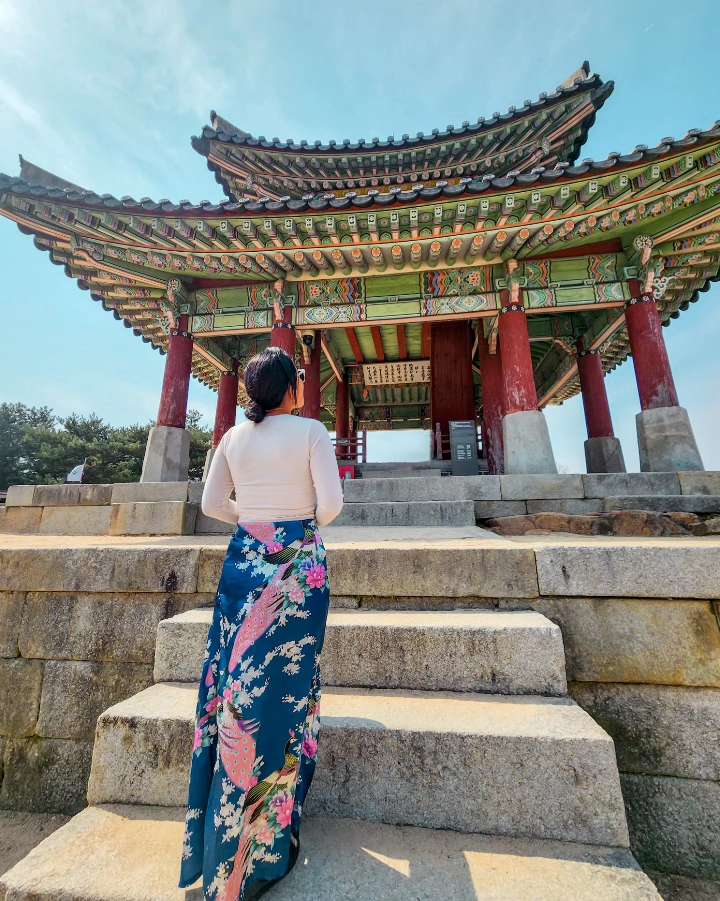
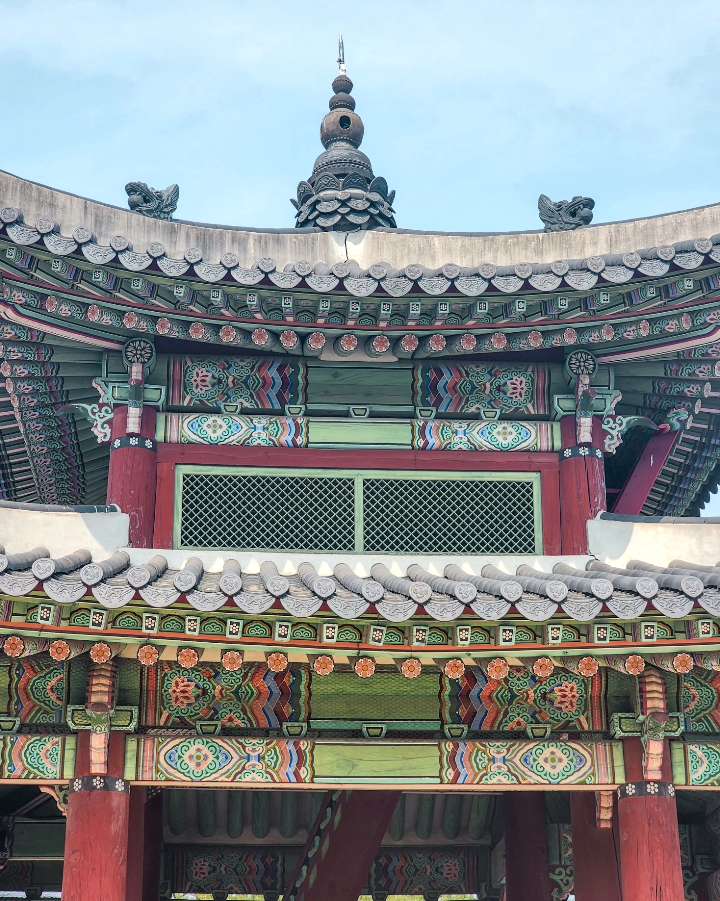

Day 1: Arrival and Exploration
As the plane touched down at Incheon International Airport under the blanket of night, the twinkling lights of Seoul was on, signaling the start of an exciting adventure. I had decided to stay in Seoul than Incheon so, i bought trian ticket and was on my way to my accommodation.
After a swift transfer to my hotel in the heart of the city, I checked in and settled into my accommodation, eager to begin my exploration of this vibrant metropolis.
Despite the late hour, my excitement was palpable, and I couldn’t resist the temptation to venture out into the bustling streets. I got myself sorted with Seoul, Korean Transport card which you can purchase from any convenient store & just top it up like a money card. I then walked around a bit and had late late Korean seafood pancake for dinner, looking forward a 3 hours long food tour tomorrow.
Where to stay in Seoul, South Korea?
For accommodation, I recommend using booking.com and sorting with price, then consider the ones with highest reviews plus within 1km of center/old town.
For tours, I recommend using get your guide and walking tours available in most places. For Seoul Food tour see below.
Seoul offers a wide range of accommodation options to suit every budget and preference. Here are some popular areas to consider for your stay: Book accommodation through trusted Booking.com
- Myeongdong: Known for its bustling shopping streets, Myeongdong is a great area to stay for those who want to be in the heart of the action. The area is also home to many restaurants, cafes, and street food vendors.
- Hongdae: If you’re looking for a more bohemian vibe, Hongdae is the place to be. This area is known for its indie music scene, street art, and lively nightlife. It’s also home to Hongik University, giving it a youthful energy.
- Insadong: For those interested in history and culture, Insadong is a great choice. This neighborhood is known for its traditional Korean houses (hanok), art galleries, and antique shops. It’s also home to many traditional tea houses and restaurants.
- Gangnam: Made famous by the song “Gangnam Style,” this area is known for its upscale shopping and dining. It’s a great choice for those looking for a more luxurious stay.
- Itaewon: Known for its diverse population and international cuisine, Itaewon is a great choice for those looking for a more multicultural experience. The area is also home to many bars and clubs, making it popular with expats and tourists alike. This is the area I stayed at.
Day 2: Korean Food Exploration
Morning: I started my day with a fiery kick, diving into the world of Korean cuisine. Known for its bold flavors and spicy dishes, Korean food has always been a favorite of mine. Eager to indulge my taste buds, I embarked on a food tour through the bustling streets of Seoul. One tour I highly recommend is The 10 Tastings of Seoul Street Food” by Withlocals. This tour not only satisfied my craving for spicy food but also introduced me to a variety of authentic Korean dishes, each more delicious than the last. From savory pancakes to spicy rice cakes, each bite was a culinary adventure, showcasing the diverse flavors of Korean street food.
After the tour, fueled by the delicious food I had just sampled, I continued my exploration of Seoul’s cultural gems. I visited Gyeongbokgung Palace, the grandest of the Five Grand Palaces built during the Joseon Dynasty. The palace’s majestic architecture and serene gardens were a sight to behold, offering a glimpse into Korea’s rich history. To hire the traditional Korean dress cross the street from the left block of the palace, there are many shops.
Next, I wandered through the charming streets of Bukchon Hanok Village, where traditional Korean houses (hanok) have been beautifully preserved. Walking among these centuries-old buildings, I felt a connection to Korea’s past, appreciating the architectural beauty and cultural significance of these historic homes. Type in Bukchon Yukgyeong on google maps for photo spot.
As the day drew to a close, I strolled along Insadong Street, a lively thoroughfare known for its antique shops, galleries, and traditional tea houses. The street was alive with activity, and I found myself drawn to the vibrant atmosphere. I ended the day with a cup of traditional Korean tea, reflecting on the day’s adventures and looking forward to what tomorrow would bring.
Day 3: Day Trip to Suwon

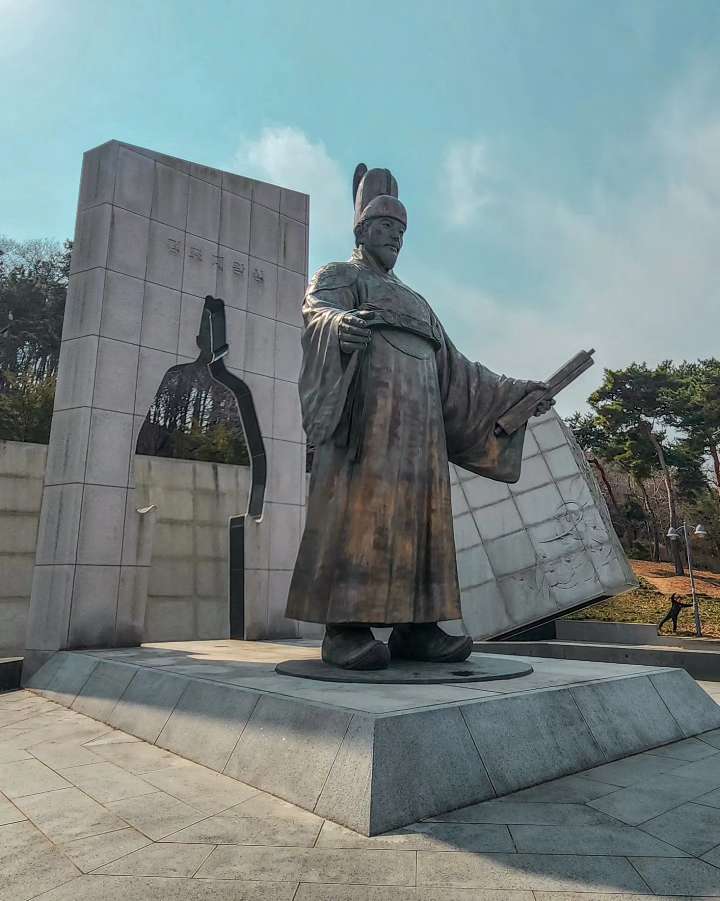

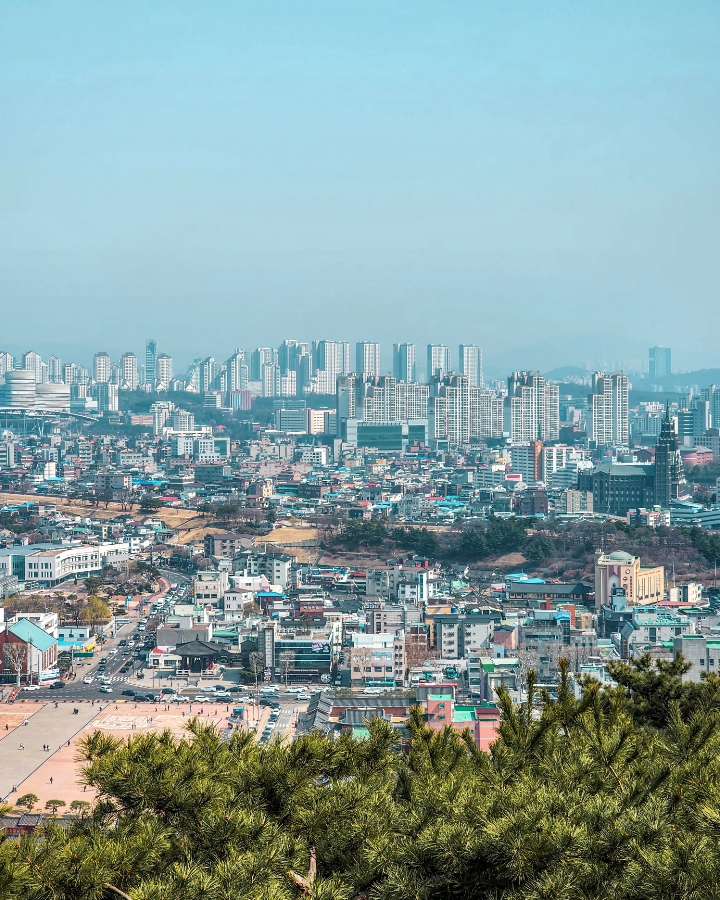
How to go from Seoul to Suwon?
Subway: 1 hour it’s too long so I didnt even bother with it and went with train.
Train: 30 mins
The best way to get from Seoul to Suwon without a car is to take Nooriro train which takes 34 min and costs costs ₩2,700.The ride is much more comfortable than taking the subway and it’s direct.
Morning: I had a met a Afghani/British fellow solo traveler and we decided to explore outside of Seoul. A day trip to Suwon, a city located approximately 30 kilometers south of Seoul. Suwon is renowned for its well-preserved Hwaseong Fortress, a UNESCO World Heritage site and a prime example of 18th-century military architecture.
Why Visit Suwon: Suwon offers a glimpse into Korea’s rich history and cultural heritage. The Hwaseong Fortress, built during the Joseon Dynasty, is a testament to Korea’s architectural prowess and strategic military planning. The fortress walls stretch over 5.7 kilometers and are adorned with impressive gates, pavilions, and guard towers, offering a fascinating insight into Korea’s past.
Upon arriving in Suwon, we made our way to Hwaseong Fortress, eager to explore this historic site. Walking along the fortress walls, we marveled at the stunning architecture and panoramic views of the city below. We visited the various gates and pavilions, learning about the history and significance of each structure.
Afternoon: We stopped at Hyowon Park which is located in Suwon area and is a beautiful public park known for its stunning cherry blossoms in the spring. The park is a popular spot for locals and tourists alike, offering a peaceful escape from the city’s hustle and bustle.
Then in the begining, as the sun began to set, we made my way back to Seoul, reflecting on the day’s adventures. Suwon had offered a fascinating glimpse into Korea’s past, and we were grateful for the opportunity to explore this historic city.
Day 4: Cultural Exploration

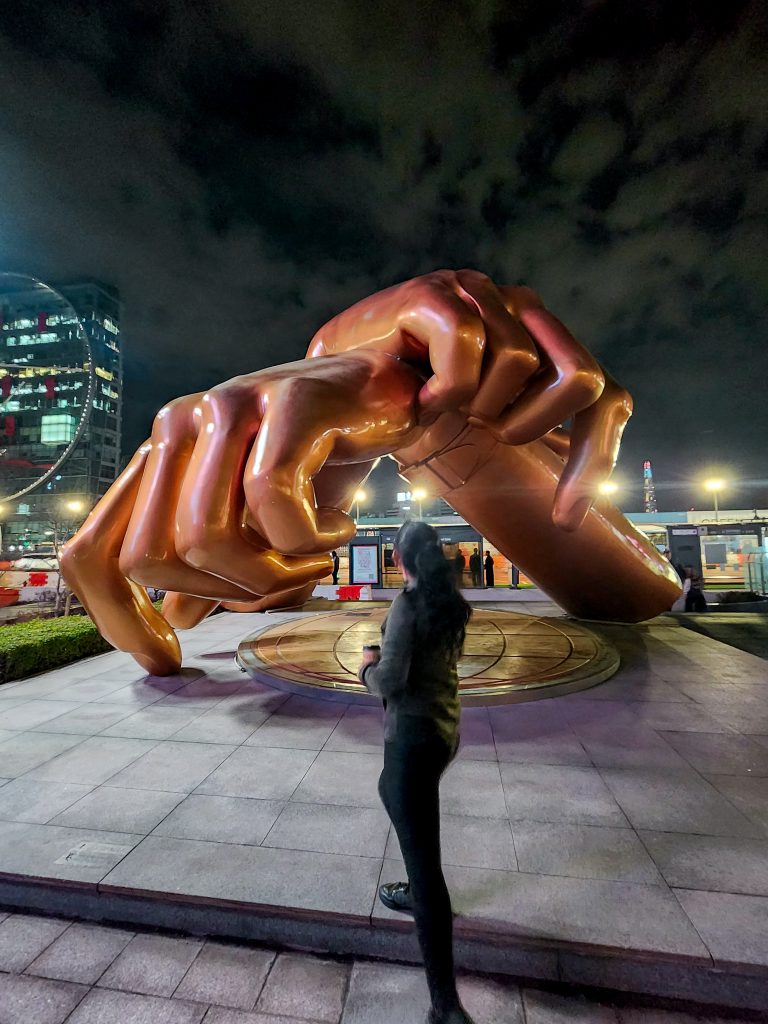

Morning: I started my day with a deep dive into Korean history and culture at the National Museum of Korea. Located in Yongsan-gu, this expansive museum is home to a vast collection of artifacts that showcase Korea’s rich cultural heritage. From ancient artifacts to contemporary art pieces, the museum offered a comprehensive look into the country’s past and present.
Afternoon: After a morning of cultural exploration, I headed to Hongdae, known for its vibrant art scene and youthful energy. I wandered through the streets, taking in the colorful street art and browsing through the trendy boutiques. Hongdae’s unique blend of creativity and culture was truly inspiring, and I found myself captivated by the area’s lively atmosphere.
Evening: For the evening, I ventured to the COEX Starfield Library in Gangnam, a stunning two-story library located in the heart of the bustling COEX Mall. Surrounded by towering bookshelves and bathed in soft light, the library offered a peaceful retreat from the hustle and bustle of the city. I spent some time exploring the vast collection of books and soaking in the serene ambiance.
Gangnam Statue: After the library, I visited the Gangnam Statue, a bronze sculpture that has become a symbol of Gangnam’s vibrant culture and modernity. The statue was a popular spot for photos, and I couldn’t resist capturing a few shots of this iconic landmark.
To end the day on a high note, I attended a traditional Korean performance at Nanta Theater. The show, which combines music, comedy, and culinary arts, provided a lively and entertaining glimpse into Korean culture. The energetic performance left me with a newfound appreciation for Korea’s rich cultural heritage, making it a perfect end to a day filled with cultural exploration in Seoul.
Day 5: Day Trip to Wonju

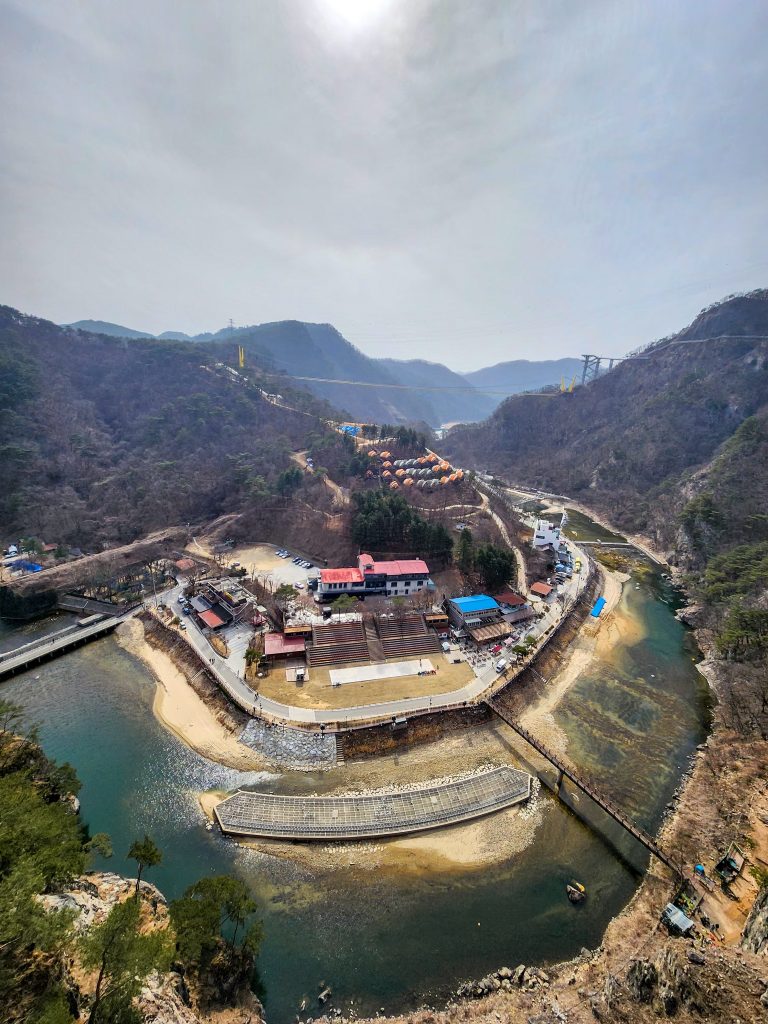
How to get to Seoul to Wonju?
The best way to get from Seoul to Old Wonju Station is to bus which takes 1h 54m and costs ₩10,000 – ₩15,000. Alternatively, you can train, which costs ₩12,000 – ₩29,000 and takes 2h 12m.
Wonju-si, located in the Gangwon Province of South Korea, is a charming city known for its natural beauty, cultural heritage, and outdoor recreational activities. One of the must-visit attractions in Wonju-si is the Ganhyeon Tourist Area, specifically Sukgeumsan Grand Valley, which offers a stunning natural landscape and a variety of activities for visitors to enjoy.
Decided to go for another day trip during my one week in Seoul, and glad my new friend agreed to it so we were off an exciting day trip to Wonju, a city known for its picturesque landscapes and cultural attractions. One of the highlights of Wonju is the Wonju Sogeumsan Mountain Suspension Bridge. Expect to see dramatic forest, gorge & mountain views from a landmark hanging bridge that sways underfoot. Also the other 2 separate suspension bridges adds to a already stunning visual spectacle.
You can hike along the valley’s trails, taking in breathtaking views of the surrounding mountains and valleys. The area is particularly popular in the fall when the leaves change color, creating a stunning tapestry of red, orange, and yellow.
It took most part of morning to get there and we spent pretty much the whole day to explore the area.
Alternatively, you can go for a day trip to the Demilitarized Zone (DMZ), a highly fortified border that separates North and South Korea. Joining a guided tour, I learned about the history, korean war and tensions between the two countries, visiting sites such as the 3rd Infiltration Tunnel, Dora Observatory, and Dorasan Station. The DMZ provided a sobering reminder of the ongoing conflict between North and South Korea, offering a glimpse into a world fraught with tension and uncertainty.
Some other recommended day trips are Garden of Morning Calm, Nami Island or Petite France, Pocheon Art Valley or another bridge Gamaksan Suspension Bridge. And if would like to hike more Bukhansan National Park is a perfect spot or a trip to Busan.
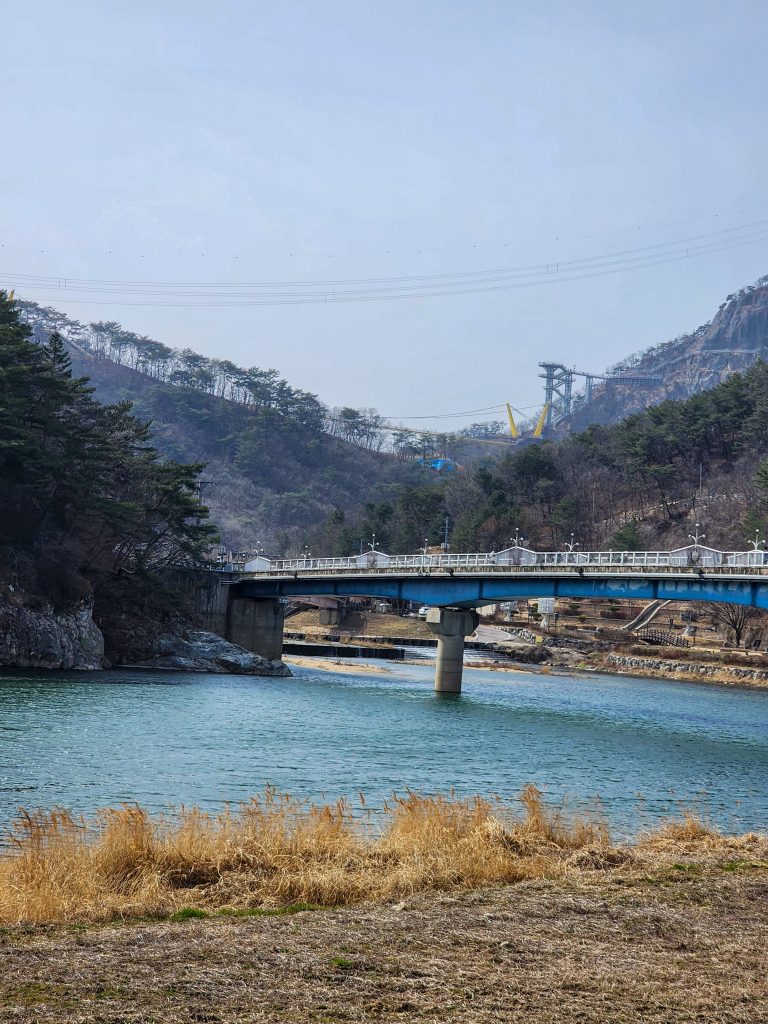


Day 6: Nature and Relaxation
Morning: I started my day with a peaceful walk in Namsan Park, enjoying the lush greenery and serene atmosphere. The park offered a welcome escape from the hustle and bustle of the city, allowing me to reconnect with nature and recharge for the day ahead. After exploring the park, I visited Namsangol Hanok Village, a traditional Korean village that offers a glimpse into Korea’s past. The village’s well-preserved hanok houses and cultural exhibits provided a fascinating insight into traditional Korean life.
Afternoon: In the afternoon, I explored the stunning Changdeokgung Palace and its Secret Garden. The palace, a UNESCO World Heritage site, is renowned for its beautiful architecture and tranquil gardens. The Secret Garden, in particular, was a highlight of my visit, with its winding paths, pavilions, and ponds creating a peaceful oasis in the heart of the city. You could also go for lotte world tower for that sunsets view.
Evening: To unwind after a day of sightseeing, I decided to indulge in a traditional Korean jjimjilbang (sauna) experience. The jjimjilbang is a popular Korean pastime, offering a relaxing and rejuvenating experience for both body and mind.
After my sauna session, I headed to Myeongdong night market to indulge in some of Seoul’s famous street food. From spicy tteokbokki to crispy fried chicken, the street food vendors in Myeongdong offered a tantalizing array of culinary delights, making it the perfect end to a day of nature and relaxation.
Day 7: 1 week itinerary Seoul
Morning: As my time in Seoul came to a close, I wanted to make the most of my last day in the city. I visited a local market to pick up some last-minute souvenirs, immersing myself in the vibrant atmosphere and bustling energy of the market. Alternatively, I returned to Gwangjang Market for one last time, drawn by its lively ambiance and tantalizing array of street food. I couldn’t resist sampling some of my favorite dishes once more, savoring each bite as a final taste of Seoul.
Afternoon: With a heavy heart, I made my way to Incheon International Airport for my departure. As I reflected on my time in Seoul, I was filled with gratitude for the unforgettable experiences and memories I had made. Seoul had captured my heart with its rich culture, warm hospitality, and delicious cuisine, leaving me eager to return and explore more of this dynamic city.
1 week in Seoul travel tips



How to get to Seoul?
By Air: Seoul is served by two major international airports: Incheon International Airport (ICN) and Gimpo International Airport (GMP). Incheon International Airport is the primary gateway for international flights, located about 48 kilometers west of Seoul city center. Gimpo International Airport mainly serves domestic flights and some international routes within Asia. Both airports are well-connected to Seoul city center by various transportation options, including buses, trains, and taxis.
By Land: Seoul is easily accessible by land from various cities in South Korea and neighboring countries. The city is well-connected to the rest of South Korea by an extensive network of highways and expressways. Seoul is also connected to cities in China and Russia by train, with the KTX high-speed rail offering services to cities like Busan, Gwangju, and Daejeon.
By Sea: While Seoul is not directly accessible by sea, the port city of Incheon, located west of Seoul, serves as a major gateway for ferry services to nearby islands and international destinations. Incheon Port offers ferry services to destinations such as China and Japan, providing an alternative way to reach Seoul for those traveling by sea.
What are must try food in Seoul?
Seoul is a food lover’s paradise, offering a wide range of delicious and unique dishes to try. Here are some must-try foods in Seoul:
- Kimchi: Korea’s famous fermented vegetable dish, kimchi is a staple in Korean cuisine. It can be spicy or mild and is usually served as a side dish.
- Bibimbap: A popular Korean rice dish, bibimbap consists of rice topped with assorted vegetables, meat (often beef), a fried egg, and gochujang (Korean chili paste). It’s usually mixed together before eating.
- Korean BBQ: Seoul is known for its Korean BBQ restaurants, where diners can grill their own meat at the table. Beef (galbi) and pork (samgyeopsal) are popular choices.
- Tteokbokki: Spicy rice cakes cooked in a gochujang-based sauce, tteokbokki is a popular street food in Seoul. It’s often served with fish cakes and boiled eggs.
- Samgyetang: A traditional Korean chicken soup made with a whole young chicken stuffed with rice, ginseng, garlic, and jujube. It’s believed to have health benefits and is often eaten in the summer to combat the heat.
- Jajangmyeon: A popular Korean-Chinese noodle dish, jajangmyeon consists of noodles topped with a thick sauce made from black soybean paste, diced pork, and vegetables.
- Kimbap: Similar to sushi, kimbap is a Korean rice roll filled with vegetables, egg, and sometimes meat or fish, all wrapped in seaweed.
- Bingsu: A popular Korean dessert, bingsu is a shaved ice dessert topped with sweet toppings such as red bean paste, fruit, and condensed milk.
These are just a few of the many delicious foods to try in Seoul. The city is also known for its vibrant street food scene, so be sure to explore the local markets and food stalls to discover even more tasty treats.
What are popular drinks to try in Seoul?
- Soju: A clear, colorless distilled spirit that is the most popular alcoholic beverage in Korea. It’s typically consumed neat, but it’s also often mixed with beer to make a drink called “soju bomb.”
- Makgeolli: A traditional Korean rice wine that is milky and slightly sweet. It’s often served in a bowl-shaped glass and pairs well with Korean pancakes (jeon) or spicy food.
- Sikhye: A traditional sweet rice drink that is often served as a dessert. It’s made from malted rice and has a refreshing, slightly fizzy texture.
- Green Tea: Korea is known for its high-quality green tea, and you’ll find many teahouses in Seoul serving a variety of green tea drinks, including matcha lattes and iced green tea.
- Bokbunja: A traditional Korean black raspberry wine that is sweet and fruity. It’s often served as a dessert wine or aperitif.
- Coffee: Seoul has a thriving coffee culture, with many cafes serving high-quality coffee. Try a traditional Korean drip coffee or a trendy espresso drink at one of the city’s many cafes.
- Yuja Cha: A honey-sweetened tea made from yuja (citron) fruit. It’s often served hot and is a popular drink during the winter months.
Check out some of the best cafes in Seoul you don’t want to miss
Local Currency in seoul
The local currency in Seoul, South Korea, is the South Korean Won (KRW). The symbol for the Korean Won is ₩, and the currency is issued by the Bank of Korea. Coins are available in denominations of ₩10, ₩50, ₩100, and ₩500, while banknotes come in denominations of ₩1,000, ₩5,000, ₩10,000, and ₩50,000. It’s recommended to have some cash on hand for smaller purchases, as not all places accept credit cards, especially at local markets or street vendors. Most ATMs in Seoul accept international cards, making it convenient for travelers to withdraw cash in the local currency.
Is Korea safe for women ?
South Korea, including Seoul, is generally considered safe for women travelers. The country has low crime rates, and violent crime against foreigners is rare. However, as with any destination, it’s important to take common-sense precautions to ensure your safety:
- Stay aware of your surroundings: Be mindful of your surroundings and trust your instincts. Avoid poorly lit or deserted areas, especially at night.
- Dress modestly: While South Korea is modern and cosmopolitan, it’s still a relatively conservative society. Dressing modestly can help you avoid unwanted attention.
- Use caution when drinking alcohol: South Korea has a drinking culture, and while it’s generally safe to enjoy a night out, it’s important to drink responsibly and be aware of your surroundings.
- Use reputable transportation: Use official taxis or public transportation, especially late at night. Avoid walking alone in unfamiliar or poorly lit areas.
- Respect local customs: Familiarize yourself with Korean customs and cultural norms to avoid inadvertently offending locals.
Overall, South Korea is considered safe for women travelers, and many women visit the country without any issues. By taking basic precautions and using common sense, you can have a safe and enjoyable experience in South Korea.
Something worth mentioning here is that Google Maps doesn’t work very well in Korea, recommend downloading KakaoMap and Google Translator for effective communication.
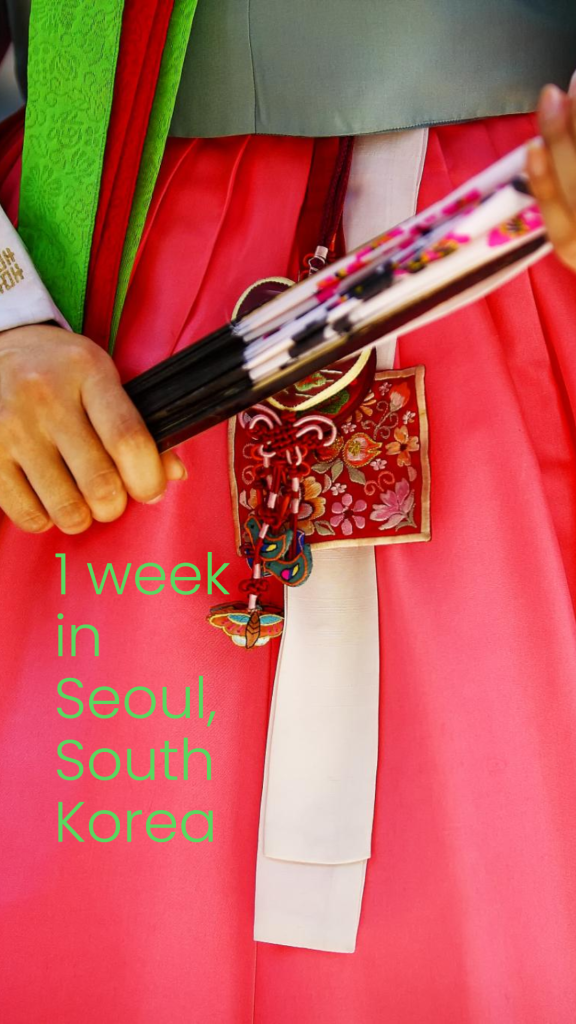
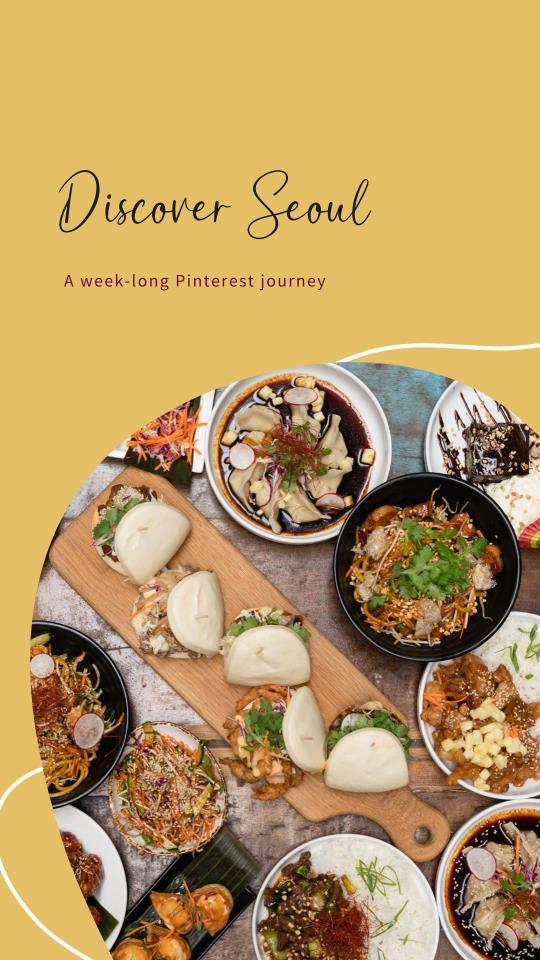
Let me know in the comments:
If you have any questions about this 1 week in Seoul itinerary
5 days in Tokyo itinerary
7 days in Mongolia travel itinerary
7 days in Tajikistan itinerary
3 days in Kuala Lumpur itinerary
Is Turkey safe for solo female travellers
Venezuela itinerary and travel tips
5 days in Uruguay itinerary
Backpacking Paraguay itinerary and travel tips
Solo trip to Peru One month itinerary
Solo female travel Colombia
7 days backpacking in Ecuador itinerary
Solo female travel to Georgetown Guyana
5 days in Oaxaca itinerary
2 days in Mexico City itinerary
7 Days Itinerary in Georgia
4 Days in Azerbaijan Itinerary
Best places to visit from Split
2 days in Split, Croatia
Solo traveling to Mostar
Solo female travel to Kotor
Solo female travel to Budva
Solo female travel Albania
Warsaw by Train covers warsaw travel tips
Check out One day in Luxembourg, western Europe
Day trip from Zurich to Liechtenstein
Travel tips to South America
Fiji solo travel guide
Australia east coast must-see
Backpacking in Melbourne, Australia
Digital nomad guide to Melbourne
14 best area to stay in Melbourne CBD
Master Sydney travel guide
Solo travel guide to Brisbane
Exploring Adelaide the best way is a must-read
Important travel tips for Uluru trip
Melbourne day trips in winter
Day Hikes in Melbourne
Weekend getaway? Check out things to do in Ballarat
Perth solo itinerary
Top 5 must do in Darwin, Australia
How to go from Dublin to Howth
Solo female travel Romania
Read a recent day trip to Zaanse Schans from Amsterdam
How about a solo itinerary to Canberra– Australia’s capital city?
Solo trip to Peru, travel tips to South America
Check out the 7 days Hanoi travel guide.
Book accommodation through trusted Booking.com
I have detailed travel resources right here. Save money, learn what and how.
If you like this article, follow my adventures on Instagram, Facebook, YouTube, Twitter, and Pinterest, or read about me travel blogger from Australia but most importantly sign up to my e-mail list to keep up with updates and travel posts!

